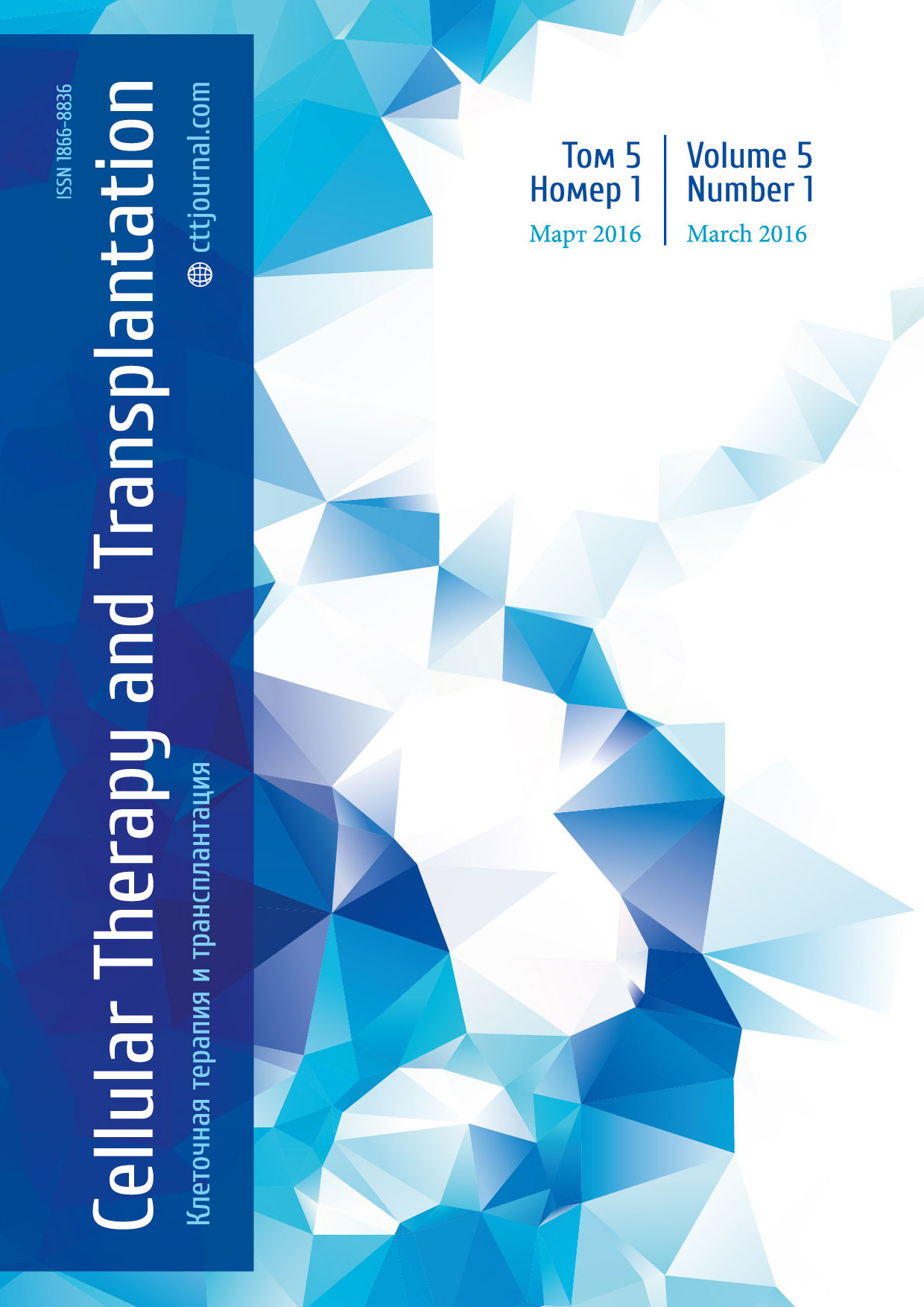Evaluation of bone marrow stromal cells regarding their role in hematopoietic reconstitution
Nikolai Y. Tsvetkov, Ildar M. Barkhatov, Alain I. Shakirova, Dmitri S. Romaniuk, Olesya G. Smykova, Vera V. Teplyashina, Ludmila S. Zubarovskaya, Boris V. Afanasyev
1R. M. Gorbacheva Memorial Institute of Children Oncology, Hematology and Transplantation, First Pavlov St. Petersburg State Medical University, 2St. Petersburg State Polytechnical University, St. Petersburg, Russian Federation
Summary
Introduction
The role of stromal microenvironment in hematopoietic stem cell transplantation (HSCT) is based on their nonlineage-specific effects upon proliferation and differentiation of HSCs. Deficient graft functioning observed in some cases necessitates development of functional tests for the stromal cells, in order to prove clinical indications for co-transplanting of hematopoietic and stromal cells (SC), and, probably, introduction of alternative therapeutic approaches.
The aim of this study was to investigate the role of bone marrow stromal cells in the course of donor marrow cells engraftment and its significance for post-transplant complications.
Materials and methods
The study included clinical observations of post-transplant course in ten patients with acute myeloid leukemia (AML) and 7 healthy donors. Bone marrow nucleated cells were selectively harvested two weeks prior to BMT, followed by monolayer culture in alpha-MEM culture medium with 20% fetal bovine serum. Upon growth of fibroblast-like cell colonies (CFU-F), their hematopoiesis-supporting activity was determined in agar-drop/liquid culture system, along with their differentiating ability towards adipogenic and osteogenic pathways. We have also measured the relative expression of selectin and CXCR4 genes in these populations.
Results
When comparing functional characteristics of SC from healthy donors and AML patients, an increased hemostimulating activity of the later was noted, as reflected by an increase in large and small CFU-GM numbers (p<0,02). In addition, an increase in convential differentiation ability was observed in AML patients (p=0,03). Moreover, the number of CFU-Fs, capable for adipogenic differentiation showed inverse correlation with platelet recovery terms (p=0,05). By the contrast, higher numbers of osteogenic colonies in culture was associated with increased terms of leukocyte lineage engraftment (p=0,05). Furthermore, a direct correlation was observed between CFU-F capable of osteogenic differentiation, and the number of blast cells at the time of transplantation (p=0,05). When analyzing gene expression in SC population, we have that a decreased expression of CXCR4 gene responsible for the homing effect proved to be dependent on the patient’s age (p=0,05). It was also revealed that higher selectin gene expression in SC population of AML patients was significantly higher than in the cells from healthy donors.
Conclusion. Stromal cells derived from the patients’ bone marrow exhibit higher proliferative activity and marked expression of molecules mediating HSC homing, as compared with a group of healthy donors. That finding could be explained by affection of stromal cells by previous chemotherapy and myelosuppression. BMSC from AML patients taken before bone marrow transplantation are characterized by a more pronounced capacity to osteogenic and adipogenic differentiation than those from healthy donors. Increased adipogenic differentiation ability of the SCs is associated with a more rapid recovery of hematopoiesis.
Keywords
Hematopoietic stem cell transplantation, mesenchymal stem cells, acute myeloid leukemia, hemostimulating activity, bone marrow transplantation


